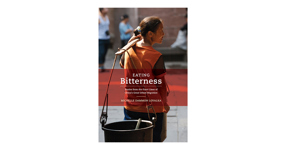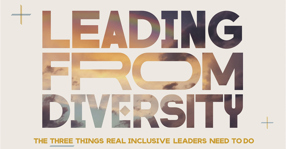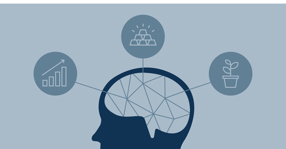We’re pleased to provide you with insights like these from Boston Private. Boston Private is now an SVB company. Together we’re well positioned to offer you the service, understanding, guidance and solutions to help you discover opportunities and build wealth – now and in the future.
You’re upset, stressed, and angry, and about to say something you may regret to a client when, fortunately, a friendly colleague pulls you back from the edge. “Relax, and take a deep breath,” she says.
While most of us know how quickly a few deep breaths can defuse a toxic situation, did you also know that this age-old advice is backed by scientific research?
A powerful tool to manage your body’s response
According to Dr. Herbert Benson, author of The Relaxation Response, breathing can be a powerful tool to moderate stress. “Breath is one autonomic system over which we have control – and through deep breathing, we stimulate the parasympathetic nervous system, which reduces heart rate and blood pressure and can bring us into a more mindful place,” he writes.
Focusing on your breathing has both physical and psychological benefits, according to Julie O’Connell, owner of The Mindful Point, a firm that offers stress-reducing, productivity-building “mindfulness” workshops and webinars for corporate clients.
“If we look at mindfulness meditation, which is an inward focus on your breathing, there are literally hundreds of studies that show how this kind of meditation can help increase brain activity in the areas involved with perspective, empathy, compassion, learning, and memory and decrease activity in the brain around stress,” she says.
Supported by recent research
One of the studies O’Connell refers to was done by Sara Lazar, PhD, assistant professor of psychology at Harvard Medical School and associate researcher in the Department of Psychiatry at Massachusetts General Hospital. Lazar and her colleagues discovered that meditation increased gray-matter density in the brain’s hippocampus, which is important for learning and memory, and decreased gray-matter density in the brain’s amygdala, which plays a role in controlling anxiety and stress.1
Another study, conducted by Dr. Elizabeth A. Hoge at Georgetown University Medical Center, found a much larger drop in stress from mindfulness-based stress reduction training than from a more traditional stress management education course.2
Benefits at home and at work
According to O’Connell, there are a number of benefits to the stress reduction that mindfulness brings, including increased patience and resilience; improved energy, creativity and problem solving; better physical and mental health; and improved memory and focus. These are all benefits that can substantially improve life in the workplace as well as at home.
“Aside from increasing individual energy, vitality, and creativity, mindfulness can help you concentrate more fully on the task at hand. It can also help you relate better to the people you work with because you’re more ‘present’ and engaged instead of trying to multi-task,” she explains.
Three easy ways to de-stress your day
Here are three ways O’Connell suggests for achieving mindfulness on a daily basis. “Even if you don’t get there right away, all three will help you feel less stressed, enjoy life more, and potentially make better decisions,” she says.
1. Just breathe. “One of the best stress reducers, honestly, is just to take two deep breaths,” says O’Connell. Two deep breaths will change your entire internal physiology and make you feel better by reducing cortisol in your blood, and increasing DHEA, the vitality hormone.
The simplest way to do this is to take a deep breath, count in for five, hold it for five, and then count out for five. While you’re doing this, try to think about a person or a place or an activity that really makes you happy. Some positive aspect of your life.
Just do this for one or two minutes a day—or any time you get stressed. It's just a matter of bringing yourself back to focusing on your breath.
The benefits of this technique: It’s easy and accessible to everyone. It can be done in a few minutes. You don’t need any special equipment, and you can do it virtually anywhere at any time.
2. Add a few minutes a day – or use an app. If you want to start a regular meditation practice, begin with the two minutes described above, at the same time each day if you can, then extend it by a few minutes each day. Find a quiet space, sit comfortably on your couch or in your office, and use your smart watch or smart phone to set a timer.
Become aware of your breath—when thoughts come up, your mind wanders, or you get distracted, move those other thoughts gently off to the side and then refocus on your breath. That’s it. Always bring it back to the breaths, if you can, and keep going.
“People think meditation is about removing all thoughts from their mind, but the true process of meditation actually involves thoughts,” says O’Connell. “It’s a pattern of: Focus. Distraction. Awareness of distraction. Return to Focus,” she says “It’s the return trip to focus that makes the difference.”
3. Stop the alerts. Every time an alert goes off on your phone, you get a spike of dopamine, which is a stress hormone. (It’s a built-in response that humans have had since prehistoric times.) “It feels good, because it temporarily gives you a boost, but it also makes you want to respond automatically and check your phone to read the message, no matter what you're doing,” O’Connell observes. “It's the way that our brains are wired, so if a dangerous tiger was getting too close, we would notice it, and take action right away. In today’s world, however, it’s usually not a tiger. It's an alert talking about Justin Bieber. Or a text asking you to pick up milk on the way home.”
Turning off the alerts—or temporarily putting your phone in airplane mode—so you can be more present in your own life and more mindful of all the interactions you’re having will have a profound effect on you and those around you, says O’Connell. Chances are the messages will still be there when you return.
2- https://www.georgetown.edu/mindfulness-training-helps-reduce-anxiety
https://www.bostonprivate.com/The opinions expressed and information contained in any article published in the Vault are given in good faith and considered reliable. However, such opinions and information are subject to change without notice and are provided only as of the date issued. Neither Boston Private, an SVB Company nor its affiliates warrant the completeness or accuracy of such information. Any third-party opinion is solely the opinion of its author and does not necessarily reflect the opinion of Boston Private or its affiliates. The materials on this website are for informational purposes only and do not take into account your particular investment objective, financial situation or need. Since each client’s situation is unique, you should consult your financial advisor and/or tax planning professional before acting on any information provided herein.














